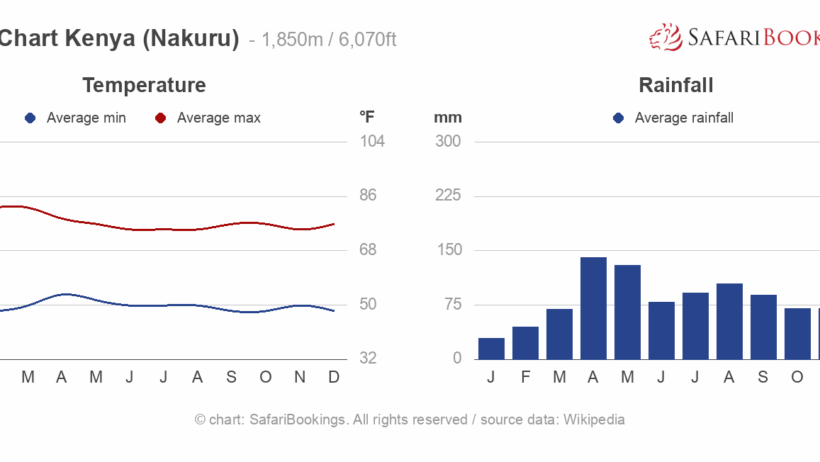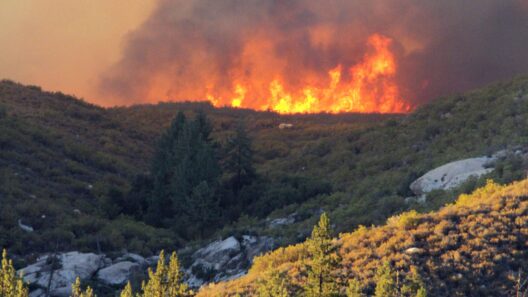Kenya, a land renowned for its spectacular biodiversity and rugged terrain, presents a climatic tapestry that varies considerably across its vast landscapes. On one hand, the sun-drenched savannas experience an abundance of warmth and light; on the other, the highlands greet the cool breezes that sweep across their verdant expanses. This dynamic interplay of climatic factors shapes both the ecological and cultural identity of the nation.
The geographical expanse of Kenya, straddling the equator, plays a crucial role in dictating its climatic conditions. In general, Kenya enjoys a tropical climate, but this generalization bears nuances that are critical to grasp. Elevation is a defining characteristic; as one ascends from the coastal plains towards the central highlands, the climate metamorphoses dramatically. Coastal regions bask in warm temperatures averaging between 75°F and 85°F (24°C to 29°C), while the highland areas can plummet to a refreshing 40°F to 50°F (4°C to 10°C). Such variation invites exploration and a deeper comprehension of the relationship between topography and climate.
Kenya’s climatic varieties manifest predominantly through its two primary seasons: the long and short rainy seasons. The long rains fall from March to May, while the short rains occur between October and December. During these times, the lush landscapes bloom into life, showcasing Kenya’s rich flora and fauna. The Western part, particularly in regions like Kakamega, often receives the most precipitation, nurturing one of the last remnants of the once-mighty tropical rainforest ecosystem.
The savanna region—home to iconic wildlife and embraced with a golden hue—experiences distinct wet and dry seasons. The dry season stretches from June to October, when the air is crisp, and the skies are generally clear. This is when animals gather around dwindling water sources, providing awe-inspiring wildlife viewing for those embarking on safari adventures. Seasons unfold like a rhythmic dance, with predictable patterns that invite both tourists and researchers to witness the splendor of animals in their natural habitats.
Conversely, the rainy seasons imbue the landscapes with vitality, yet they can present tremendous challenges as well. Intense flooding has been reported in areas experiencing heavy rainfall, highlighting how climate change exacerbates existing vulnerabilities. Altered weather patterns can lead to sudden droughts or prolonged rains, creating a havoc of consequences for agriculture—one of Kenya’s economic lifebloods—and affecting the entire food chain.
Delving deeper into the complexity of Kenya’s climate, it is prudent to explore its microclimates. Each region has unique characteristics that reflect local topographies, soil types, and vegetation. For instance, the arid and semi-arid regions in the North present stark contrasts to the lush green surroundings of the highlands. Here, pastoral communities rely on migratory patterns to survive, adapting their way of life according to the demands of the ecosystem.
The interplay between climate and culture is evident among the varied ethnic groups in Kenya. Different communities have adapted their agricultural practices to suit the climatic conditions they inhabit. The Kikuyu people, residing in the central highlands, cultivate crops like tea and coffee, thriving in the cooler, wetter climate. Meanwhile, the Maasai culture, entrenched in the southern plains, has remained resilient by herding livestock, adapting to the semi-arid regions where pastoralism underpins their traditions. This adaptability is a testament to humanity’s enduring relationship with nature.
As the global climate crisis intensifies, Kenya faces critical challenges that threaten its delicate ecological balance. Changing rainfall patterns and rising temperatures have sparked a litany of issues. Agriculture, which supports the livelihoods of 75% of the population, is increasingly jeopardized by environmental degradation. Crop failures due to erratic weather patterns accentuate the urgency for sustainable practices and innovative agricultural solutions.
Yet, within these challenges lies an opportunity—a clarion call for adaptation and creativity. Kenya has become a beacon of hope through initiatives that prioritize conservation and sustainable development. Community-driven projects focused on reforestation, water conservation, and sustainable farming practices are gaining momentum. There is a growing awareness that fostering resilience is paramount in ensuring that both the natural world and local communities thrive amidst climatic upheavals.
Tourism remains one of the most lucrative sectors in Kenya, closely tied to its natural heritage. Safaris that weave through its diverse ecosystems reveal a profound intimacy with the land, a shifting perspective on climate and conservation. Each visit to Kenya can inspire an appreciation for its rich biodiversity and an understanding of one’s place within the global ecological web. As travelers traverse the majestic landscapes, they bear witness to an extraordinary connection woven through climate, wildlife, and humanity.
In conclusion, the climate in Kenya offers more than just weather patterns; it beckons for introspection and ignites curiosity. The interaction of safari sunshine with highland breezes embodies the delicate balance of nature. While challenges abound, so too does the resilience of the land and its people. It is an unending passage of adaptation and understanding, where every seasonal shift reveals profound lessons about sustainability, coexistence, and the intricate beauty of a resilient ecosystem.








